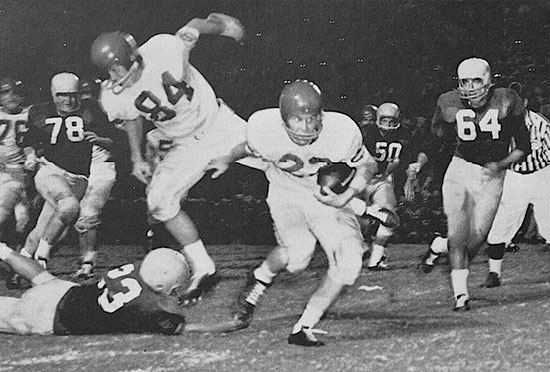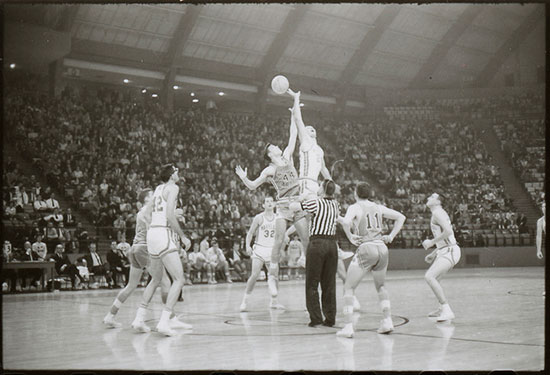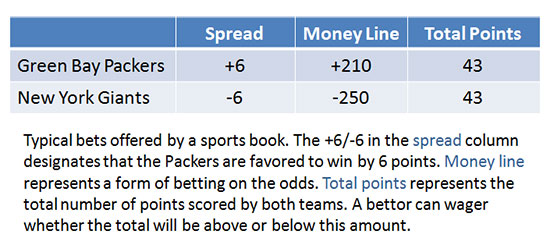Charles K. McNeil
by Andrew Boyd
Today, we make book. The University of Houston's College of Engineering presents this series about the machines that make our civilization run, and the people whose ingenuity created them.
"I'll bet you a dollar I can beat you at chess," says your competitor. "You're on," you reply. Not all wagering is quite that simple. But thanks to a historian turned mathematician, it's simpler than it used to be.
What complicates wagering is the fact that competitors are rarely equals. When two football teams step onto the field, one is usually an underdog. If wagers were dollar for dollar, betting on the favorite with a Las Vegas bookmaker would be a great strategy. But no bookmaker would be willing to take such a bet.

Football game between the 1957 Houston Cougars football team and the Miami Hurricanes at Rice Stadium in Houston. [Wikipedia/1958 Houstonian photography staff]
One solution is to use odds — a system whereby the payout isn't dollar for dollar, but is adjusted for perceptions about how likely each team is to win. It was the wagering method for decades and still remains popular. But it's not the only game in town.
In 1926, Charles K. McNeil received his degree in history from the University of Chicago, but went on to teach math at a prep school in Connecticut. After several years of teaching, he returned to Chicago and took a position as a securities analyst. Throughout it all, McNeil kept active with his favorite hobby, sports gambling. He proved so good at it, he soon quit his job at the bank and gambled full time.

Maryland tips off against the North Carolina Tar Heels. [flickr/Digital Collections at the University of Maryland]
McNeil was successful enough that a major bookmaker in town placed limits on his betting. So McNeil opened his own bookmaking operation — with a twist.
As a gambler, McNeil had developed a system for evaluating each team's chance of winning by considering how many points he thought they'd score. This triggered an idea. Do away with the intricacies of odds. Instead, make the payout dollar for dollar (less a little for the bookmaker), but use the score difference to level the playing field. If McNeil listed the Packers as a 9 point favorite over the Giants, someone wagering on the Packers would win only if the Packers won by at least 9 points. On the flip side, if the Giants won, or if they lost by less than 9 points, a wager on the Giants would prove a winner.
The wagering public loved the idea, called point spread betting. It was simple and connected at some level with the minds of gamblers. The practice spread, and today it's the most dominant form of wagering in many sports, including football and basketball. You're more likely to hear a sports commentator say the Packers are a 6 point favorite than to hear the odds of a Packer win are 3 to 2.

McNeil wisely got out of the bookmaking business when he received an offer from organized crime to "go partners with my brain." He returned to gambling and — at least according to McNeil — over a 27 year period his winnings averaged over 300,000 dollars a year. It's possible, though gamblers have been known inflate their winnings. Either way, while sports betting may be creative, I can think of many, many better ways to put good math skills to work.
I'm Andy Boyd at the University of Houston, where we're interested in the way inventive minds work.
(Theme music)
Notes and references:
R. Boyle. The Brain That Gave Us the Point Spread. Sports Illustrated, March 10, 1986.
This episode first aired on December 4, 2013.